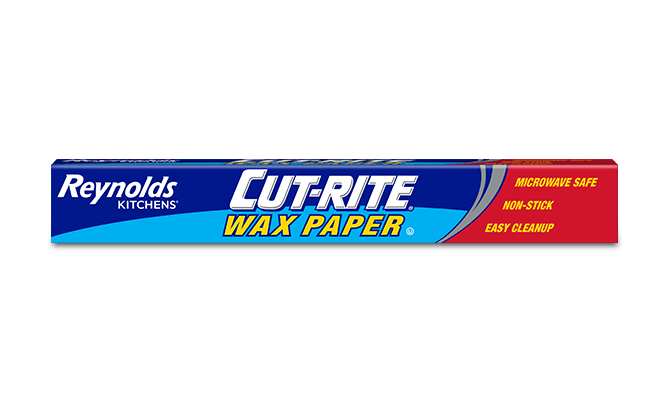MAKING THE RIGHT CHOICE: WAX PAPER VS. PARCHMENT PAPER FOR COOKING AND BAKING
Last updated: October 9, 2024
Have you ever been in the middle of prepping, cooking, or baking, only to find yourself stuck between a pivotal decision—wax paper vs. parchment paper? Although these two kitchen staples may appear similar, their unique properties make them better suited for specific tasks.
To help you get the best results for your culinary or baking creations, let’s explore the differences between wax paper and parchment paper to ensure you make the right choice.
IS PARCHMENT PAPER THE SAME AS WAX PAPER?
You may be tempted to use wax paper instead of parchment paper and vice versa, but these two papers are different. It’s important to know what each of these papers is made of in order to understand their uses.
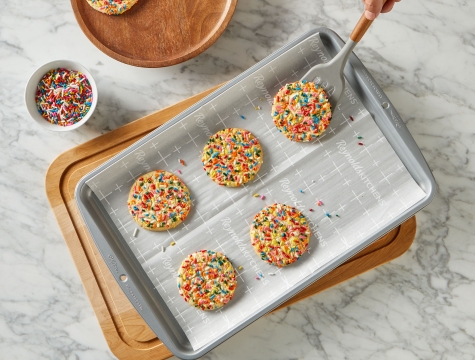
What is parchment paper?
Parchment paper is made of paper with a food-safe silicone coating that makes it heat-resistant and non-stick. Parchment paper is the perfect option when baking because it can handle temperatures up to 425°F.
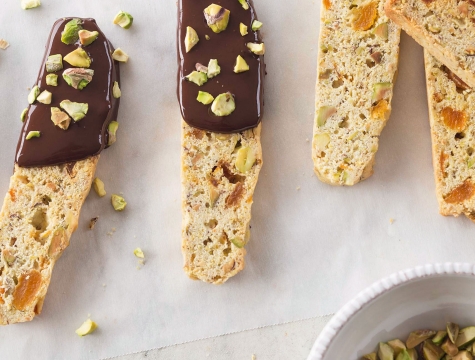
What is wax paper made of?
Wax paper has a food-safe non-stick paraffin wax coating which makes it better suited for cold food storage or as a barrier between food and surfaces. Wax paper cannot withstand high temperatures and will melt if exposed to excessive heat.
WHEN TO USE PARCHMENT PAPER VS. WAX PAPER
Parchment paper and wax paper are commonly used in the kitchen, but knowing when to use each can help you get the best results and avoid any kitchen mishaps.
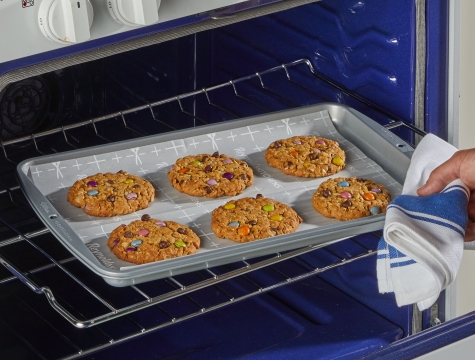
Which is best in the oven?
The clear winner is parchment paper for baking and cooking! It’s oven-safe up to 425°F, and the non-stick properties can keep your cookies, brownies, casseroles, and more from adhering to the pan. Substituting parchment paper for aluminum foil when baking cookies will help to avoid burnt bottoms.
Many ask, can wax paper go in the oven? While we don’t recommend direct exposure to the heat of an oven, wax paper may be used as a pan liner when baking cakes, bread, brownies, or any baked food in which the dough or batter completely covers the wax paper lining.
How about using parchment or wax paper in the broiler?
Do not ever use parchment or wax paper in the broiler. Despite its heat resistance, parchment paper can’t handle the heat of any broiler, which can reach temperatures upward of 500°F. And wax paper? It should never come near the high heat of the oven or broiler. So, remember, stay safe and skip the paper when it comes to broiling.
Can you microwave parchment paper and wax paper?
Yes! Heating up your favorite meals in the microwave just got even easier. You can use wax paper and parchment paper covers to prevent splatters and hold moisture in while microwave heating. They are both microwave-safe and a great way to keep your meals and microwaves mess-free.
Are parchment and wax paper safe for grills and smokers?
When grilling and smoking, it’s important to use the appropriate materials to minimize the risk of accidents. With open flames and long periods of heat, you should avoid using parchment paper and wax paper in grills and smokers.
Instead, opt for Reynolds Wrap® Grill Foil for all your grilling needs. It’s sturdy and non-stick, and it can withstand high grill temperatures. Additionally, its extra-wide surface ensures food doesn’t fall through the grates and simplifies cleanup.
For juicy smoked meat, the ultimate choice is Reynolds Kitchens® Pink Butcher Paper , which has added wet strength for smoking juicy meats. Butcher paper retains moisture yet releases steam, ensuring flavorful, juicy meat and a crisp bark. For more information, check out our Master the Art of Smoking Meats with Butcher Paper article.
Parchment vs. wax paper: Which is best for food prep and storage?
Parchment and wax paper can be your trusted kitchen sidekicks for food prep and storage. Let’s explore how these kitchen essentials can help keep your food fresh and easy to store:
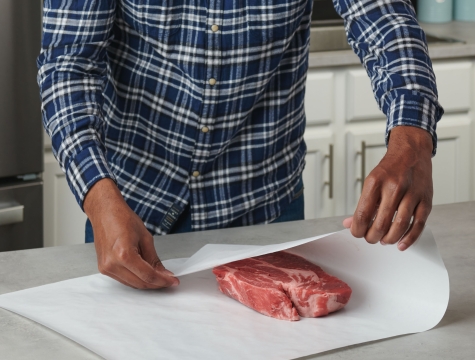
Freezing foods
You can choose among parchment paper, wax paper, and Reynolds Kitchens® Freezer Paper when storing food items in the freezer. You may use all three to wrap and separate foods to keep them from sticking together, for example, storing burger patties, meats, or individual servings of leftovers.
That said, we recommend freezer paper for the best barrier against air and moisture, which helps prevent freezer burn. It’s got a slick, shiny coating on one side that helps keep food moisture from soaking through the paper. All three papers will work well if you thaw the food before separating it. However, if you need to separate frozen food, it’s better to use freezer or parchment paper. They are more durable and tear-resistant compared to wax paper when either wet or dry.
Making fudge, caramel, and candy
Parchment and wax paper are both good options when making fudge, caramel, and candy. Both parchment and wax paper will do an excellent job lining pans, wrapping individual pieces, or creating barriers between layers when storing—the differences between the two papers for use with confections are minimal. Ultimately, it comes down to personal preference and what materials you have on hand.
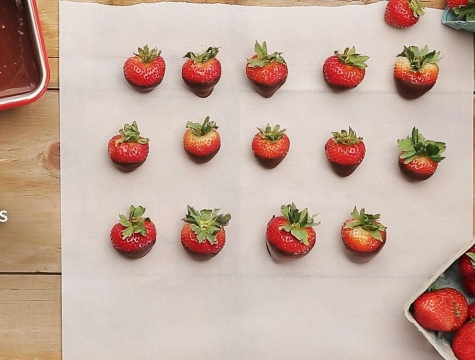
Cooling melted chocolate and chocolate-covered fruit
Looking to impress your guests with fancy chocolaty decorations or delectable chocolate-covered fruit? You can use parchment paper or wax paper to cool your melted chocolate creations. Line a baking sheet with your choice of paper and drizzle your designs directly on the sheet. Or dip your strawberries, bananas, and dried fruits in melted chocolate and place them on the lined baking sheet. Chill the baking sheet in the fridge for around 30 minutes, and voilà! Once the chocolate has hardened, it peels off the paper with ease.
Wrapping sandwiches
If you want to keep your sandwich fresh and soft for a long time, go for wax paper instead of parchment paper. The wax protects against air, preventing your sandwich from drying out and maintaining its freshness. Without a doubt, wax paper reigns supreme when it comes to selecting a paper wrap for sandwiches.
Heat presses: parchment paper vs wax paper?
If you’re using any heat application, it’s important to exercise caution when working with paper. We have some recommendations regarding common heat presses you might use at home.
Tortilla and panini presses
Want to create the perfect panini or tortilla without making a mess? Just use parchment paper! Wrap your sandwich in parchment paper when using a panini press to keep everything neatly inside and avoid messy cleanup. And when using a tortilla press, parchment paper will ensure your dough doesn’t stick, giving you the best results every time! If you keep the temperature 425°F and lower, these handy kitchen presses can do wonders for your sandwich-making game. We do not recommend using wax paper, as the wax will melt and could become a fire hazard.
Irons
Using parchment paper for ironing fabrics keeps your iron free from sticky buildup. When fusing interfacing or placing an iron-on patch on fabric, sticky adhesives may ooze and burn onto your iron’s soleplate. To avoid this, set a layer of parchment paper between the iron and the material to prevent any residue transfer.
Need more help finding the ideal paper, from aluminum foil to parchment paper, wax paper, freezer paper, or butcher paper? Our Complete Guide to Cooking Papers has all the answers you need—check it out and find the right one for the job!
EXPLORE MORE USES FOR WAX PAPER AND PARCHMENT PAPER
Discover more ways to use wax and parchment paper in the kitchen and beyond. In our article Wax Paper Tips , we uncover how wax paper can keep your fridge and kitchen mess-free while also helping you protect your cookbooks. And if you’re looking for easy and clever ways to use parchment paper, check out our article on the Best Reasons to Use Parchment Paper . You’ll discover the magic of parchment paper and how it can help you create perfect desserts and cookies, cook mouthwatering meals, and keep your kitchen tidy.
While they may appear similar, there are many differences between wax paper and parchment paper. Each type of paper has unique characteristics that make it perfect for certain tasks. If you need help deciding which paper to choose for your kitchen project, compare the specific properties of wax paper and parchment paper and select the one most suited to your needs.
YOU'LL NEED
Parchment Paper With Stay Flat Dispensing
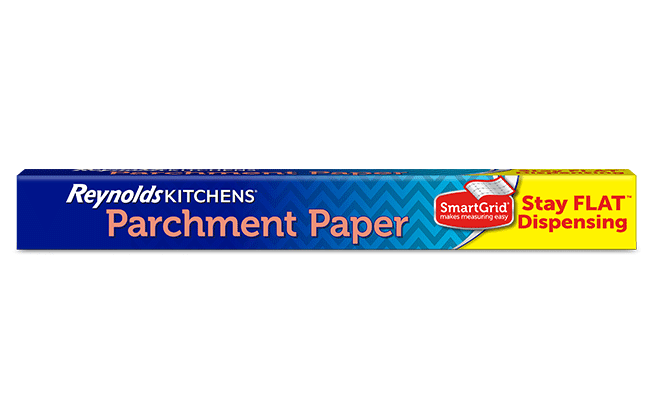
YOU'LL NEED
Wax Paper
